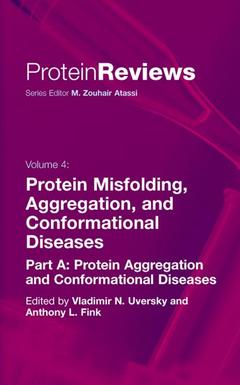Description
Protein Misfolding, Aggregation and Conformational Diseases, Softcover reprint of hardcover 1st ed. 2006
Part A: Protein Aggregation and Conformational Diseases
Protein Reviews Series, Vol. 4
Language: English
Subjects for Protein Misfolding, Aggregation and Conformational Diseases:
Publication date: 11-2010
419 p. · 15.5x23.5 cm · Paperback
Publication date: 06-2006
419 p. · 15.5x23.5 cm · Hardback
Description
/li>Contents
/li>Comment
/li>
This volume fills the gap in protein review and protocal literature while summarizing recent achievements in the understanding of the relationships between protein misfoldings, aggregation, and development of protein deposition disorders. It is devoted to the general questions of conformational disorders and includes discussion of involvement of such common factors as molecular chaperones, oxidative damage, proteasome, glycosoaminoglycans, serum amyloid protein P and several others in the development of different disorders. Some experimental techniques applicable for the visualization of protein deposition in vivo and in vitro are also present.
These books may interest you

Protein Misfolding 143.27 €



